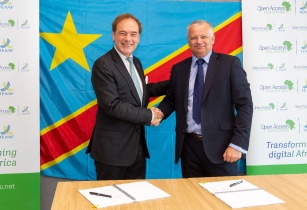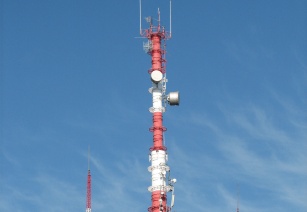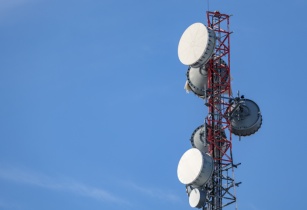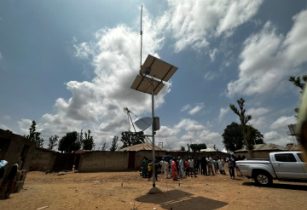The use of White Spaces (portions of licensed radio spectrum that licensees do not use all of the time or in all geographical locations) for wireless broadband provides a tantalising opportunity to deliver cheap and ubiquitous broadband services writes Adam Denton, consultant, Coleago Consulting
White Space advocates promise to bridge the digital divide efficiently and effectively by tapping into under-utilised spectrum, and introduce competition to mobile operators who have ‘failed’ to provide rural coverage or deliver reliable ubiquitous broadband services. Implemented well, with due consideration of potential future scenarios, there may be nothing to lose. However, make a mistake and it is possible that digital divide could be entrenched for another generation. In Africa, a region with a deeply embedded digital divide, where the continent’s 1 billion inhabitants still only represent seven per cent of the global online population, the stakes and implications are high.
Is this panacea a reality or a mirage?
The non-commercial White Space pilot schemes around the world, including those in South Africa and Kenya, have demonstrated that White Space technology works. The trials have managed to deliver reasonable broadband networks over small areas without creating unreasonable interference to adjacent services. But the trials are just that – trials - and do not necessarily prove that White Space solutions will be commercially viable in the long-term.
Whilst a number of ‘White Space’ concepts exist, the most likely solution to address rural broadband needs is one that operates in the TV White Spaces between 470MHz and 700MHz. There are a few policy assumptions that underpin the concept:
First it is assumed the spectrum is ‘unlicensed’ and being made available to commercial or government users on a non-exclusive basis.
Secondly, the spectrum is free, there is no cost to use the spectrum and the user has no long-term rights to the spectrum.
Thirdly, current solutions assume there is a spectrum database available that has accurate data to allow the White Spaces to be identified, either managed by the regulator or commercially ‘outsourced’.
Careful consideration is therefore required before implementing the regulatory framework to allow White Space use, not least how to clear the band at a future point in time (e.g. what rights the White Space user and their customers have). Assuming the regulatory environment can be established to allow the use of White Spaces, there remain a number of open questions to consider before betting on White Space solutions, especially in developing markets like Africa looking to provide rural coverage and bridge the digital divide.
How do you implement rural backhaul for White Space solutions?
It does not really matter what wireless access technology is being used, broadband data will still need backhauling from a base station. Given the focus on rural broadband solutions and the need to address a chronic lack of fixed infrastructure in many markets, backhaul is a major issue. The use of the UHF frequencies allows White Space technology to get better coverage than existing Wi-Fi spectrum, and with directional antennas it is also possible to extend the range. With existing standards you may even get a reliable service up to 4 km from the base station. This is fine for providing ‘last mile’ coverage where a fixed telecom infrastructure exists, but does not resolve issues providing coverage in dispersed rural communities. Unless the rural backhaul challenge can be cost effectively addressed, White Space solutions cannot provide a ubiquitous service to the rural communities they claim to address.
If coverage is an issue, do you need to adapt 802.11AF standards?
To date, White Space solutions have looked to deploy 802.11AF standards. These determine the transmit power as well as placing limits on the height of fixed antenna. These limitations help to ensure good reuse of spectrum, but they do this by intentionally restricting coverage. There are already calls to relax the standards to enable White Space solutions to address the rural coverage challenges better. The implication of introducing a high power Wi-Fi service in ‘unlicensed’ bands needs to be very carefully considered, as this will inevitably create greater interference challenges for incumbent services sharing the spectrum.
Why give away spectrum to an unproven technology solution?
There is no question that Wi-Fi solutions work. There is also no question that mobile solutions also work! The question is whether Wi-Fi solutions, when used to provide wide area rural coverage, either work more effectively than mobile solutions or have a completely different economic paradigm. It seems very unlikely.
Mobile networks are designed to provide coverage and to manage subscribers across the network. The only reason they do not provide a ubiquitous service today is economic, not technical. Providing spectrum for free with very low licence costs would change the economics for mobile and result in greater coverage. If the main application of White Space technology is to address the rural digital divide, then mobile solutions still look better placed to deliver if the economic barriers can be removed. Other than the cost of spectrum and license fees, the network costs look comparable between services; White Space solutions do not dramatically change the economics of supporting rural networks.
Why would you give away spectrum for free when mobile operators will buy it?
Although in theory there is White Space across many bands, the spectrum focus for White Space in rural areas is the UHF TV spectrum. This is unsurprising as the propagation characteristics are good for wireless services, especially in rural areas where population density is low and coverage is critical. Unsurprisingly this is also the ‘prime real estate’ for mobile operators and is an obvious target band for WRC15.
It is clear from the 700/800 MHz auctions around the world that there will be significant value (revenue) for governments by selling spectrum in the UHF band. If by introducing coverage obligations into licence conditions for lower frequencies (as has been the approach in many 700/800 licences) you can meet your policy goals and also raise funds, why would you not? Whilst revenue generation should not be the primary objective of governments when considering spectrum allocations, it is inevitably a consideration.
Does it not take too long to make licenced spectrum available for use?
Mobile operators want the commercial certainty a licence provides and want exclusive use of the spectrum they have licenced. White Space users look to share use with incumbent users and to operate on an unlicensed basis. Intuitively this suggests that it is much quicker and simpler to utilise spectrum under a White Space regime.
The reality is that in many African countries, the transition from analogue to digital TV has yet to be completed, with the 800MHz spectrum identified for mobile at WRC07 still to be released. Given the complexity of managing the digital TV transition, it is probably unrealistic to simultaneously deploy White Space solutions in the UHF band. As a result, it is likely to be quicker and easier to release the 800MHz spectrum for mobile than to set-up the spectrum databases, the policy frameworks and the interference management regime needed to manage White Space solutions.
Therefore, whilst there will still be White Spaces following the digital transition, in terms of addressing rural broadband coverage in the short term, mobile solutions are better placed to provide solutions. This is dependent on governments licensing spectrum, but this should be easier and quicker than defining a new and unproven regulatory regime for White Spaces.
How do you ensure there is a degree of commercial certainty?
Mobile operators are strong advocates of licenced spectrum as this gives them the commercial certainty on which they make billions of dollars of network investment. Investors in White Space solutions have the same capital constraints as mobile operators. They have to demand similar levels of certainty to keep down the cost of capital and to secure the return on investment they need.
One way to guarantee this certainly is to allocate a band of spectrum for unlicensed use. An alternative is to provide some assurance to White Space users that the White Spaces they are using will remain available or alternative spectrum will be found for them. This alternative suggests the White Space users effectively operate as a licenced user with ‘rights’ and ‘protections’. This is problematic for the incumbent users, as it restricts their ability to adapt and evolve their solutions in the future.
In effect, once a White Space allocation is made, the spectrum remains ‘White Space’ from then on. Although technically it should be quick and easy to switch off the service, the practical reality is that governments are extremely reluctant to switch off consumer services, especially those supporting the most venerable and disadvantaged in society. If this assessment is correct then the irony of the conclusion is that the best way of implementing White Space solutions is to allocate the band in a conventional way!
Are there any implications for WRC15?
Because the WRC process deals with spectrum allocations for specific services and, by definition, White Space technology is designed to interleave with these services, there are no direct implications for WRC15.
There are some indirect implications. Agenda Item 1.2 specifically looks to confirm the allocation of 700MHz spectrum for mobile, reducing the UHF spectrum available for white spaces in Africa. Agenda Item 1.1 is addressing future mobile spectrum. In meeting these needs it is possible that some of the potential White Space spectrum will be allocated for mobile use. In turn, assuming there is some identification for mobile, this may move White Space technology onto less favourable bands and potentially squeeze the available spectrum for it to operate in. None of these changes happen overnight, but it means that WRC15 may well determine the time window in which White Space technology has the potential to grow and develop.
So can White Spaces solve the rural broadband challenge?
Despite the allure of White Spaces, it is likely that mobile will be the platform that delivers the majority of rural broadband globally. Industry scale, economies of scale and proven business models give the industry an inherent advantage. The exploitation of Wi-Fi offload by mobile operators demonstrates an ability to adapt and to take advantage of ‘free’ spectrum. White Spaces will be no different. If they do become available it will probably be the mobile operators that exploit them most.



































